Treason 1941 of the Year (part of 2)
Were Moscow directives implemented?
The very first major capture of the Soviet troops are famous for the 3 and 10 armies of the Western Front, located in the Bialystok ledge. Here, as part of the 10th army, the most powerful in number and quality was located tanks, well-equipped with vehicles, 6th mechanized corps of General Khatskilevich. The armies were located in the border fortified areas, in particular, the 10th army relied on the Osovetsky UR. In 1915, Russian troops in the Osovets fortress glorified themselves with a long heroic defense. As if herself story urged to hold this place.
And the main blows of the Germans passed by these armies. Guderian’s tank group moved through Brest and the location of the 4th army, Gotha’s tank group moved through the location of the 11th army to Vilnius with a turn to Minsk. On June 25, when the 4th Army failed to stop the enemy near Slutsk, intercepting the road from the Belostotsky ledge to the east through Baranavichy became a reality. On this very day 3 and 10 armies receive the PERMISSION of the command of the Western Front to exit the fortified areas and retreat east. Exactly when it is too late to retreat. West of Minsk, these armies, most of whose troops were moving in marching columns, are intercepted. Subjected to severe defeat aviation and artillery on the roads in camp columns. And it is here that the situation of the first mass capture of Soviet troops arises.
Meanwhile, before 25 Jun were still 22, 23 and 24 June. In the afternoon of June 22, a directive No. 3 was sent to the headquarters of fronts from Moscow, which required mechanized forces to inflict concentrated attacks on the enemy in the adjacent territory and capture the cities of Suwalki and Lublin.
Until Lublin, there were approximately 80 km from the locations of the 4 and 15 mechanized corps of the most powerful 6 army of the Southwestern Front. God knows that, the tanks of the mechanized corps drove away for much longer distances in other directions. Still, 80 km - and not too little. But with Suwalki everything is much more interesting.
Suwalki is a dead-end railway station in a swampy wooded bear corner of northeastern Poland. The Suwalki district was wedged in by the USSR to the north of the Belostok salient. And she went to Suwalki railway, the only one on which it was possible to supply the tank wedge of Gotha. From the border and from the locations of the 3 army to the railroad to Suwalki on the inter-grain defile, only 20 km. On the road from Augustów - 26 km. The 3 long-range artillery of the army was able to maintain its own advancing troops until the railway was cut off, without moving from its territory. Regular artillery, not moving away from the warehouses, could provide support for the offensive until the middle of this path. The projectiles necessary for powerful artillery support for a long distance are not necessary. They are here - in the warehouses of the fortified area. And we remember that the reserves on which the 5 Army relied in the Korosten SD were sufficient for more than a month of effective struggle against the enemy.
The blow of 3 to her army, with the support of a mechanized corps in the direction of the railway, made the position of 3 of the Goth tank group on Soviet territory hopeless. No fuel, no shells, no food.
And this order was to hit Suwalki. Specific order with the exact purpose of the strike. And even with a clearly defined meaning. The enemy, who threw troops into a deep breakthrough, set up his rear. On which it is necessary to strike. This is the wording of the directive, which does not allow other interpretations. The troops, who had thrown all their forces forward, themselves set up their rear areas for the rout.
Meanwhile, the command of the Western Front, headed by Pavlov and the chief of staff of the Klimovsky, instead of fulfilling the directive directive, decides not to cross the border to the railway, which is in 20 km, but to move 6's mechanized corps and cavalry through its territory towards Grodno, which is significantly further, and the tanks obviously could not have been provided on this route with fuel using cash filling equipment.
Only immediately note. What is written about the blow to Grodno can not be taken as a fact. So it is written about him. The Germans did not fix the blow. Their reconnaissance did not find large tank forces on Belostotsky bulge. The road littered with broken Soviet equipment did not go to the northeast of Grodno. And to the east - to Slonim. But this is another question.
So far it is important for us that the perfectly realistic goal of a short strike — Suwalki — as a result of which the Gotha tank group remained on foreign soil without supply — was ignored by the headquarters of the Western Front without justifying such ignoring. The mobile troops were ordered to move through their territory. In the event of a strike in the direction of the railroad to Suwalki, the 3-I army did not break away from its supply base in Osovetsky UR, making the financial position of one of the largest attacking enemy groups hopeless. Instead, mobile units are sent to travel through their territory in isolation from the combined arms army, from the supply base.
There are mistakes. But there are no identical mistakes on two fronts. The South-Western Front exactly on the same day, as we remember, the mechanized corps sends to wind the tracks hundreds of kilometers. Directive, providing a blow to Lublin - ignores. Instead, they organize a strike on their territory in Berestechko-Dubna. And, as noted, 27 June, the Mechanized Corps is advancing against an enemy who does not see. He is simply not in front of him. Although it should have been at least a day. Mekhkorpus was late with focusing on the turn of the day's attack. It hurt far had to drag.
It should be noted that Zhukov, who arrived from Moscow, participates in this decision to change the strike problem on the South-Western Front.
Maybe the directive was so obvious an adventure that the front commanders and the chief of the General Staff Zhukov personally considered it possible to ignore it? But no. The German chief of staff, Halder, noted in his diary that actions in the south are unsuccessful (we already know about the failure of the superior German forces near Przemyshl, where the 99 Red Banner Division successfully kicked them out of Soviet territory), we should be helped, but as luck would have it there is no reserve infantry division, and a small tank reserve cannot be sent to help because of the disgusting quality of the roads of Eastern Poland, which are packed with everything else.
Germans have no reserves. And all the roads on the other side of the border are clogged with wagons supplying connections thrown forward. The Soviet mechanized corps, having crossed the border, would not have any forces capable of stopping it, and would only crush the caterpillars, shoot and seize the material resources without which the German troops thrown onto Soviet territory would be helpless. We already know that German tanks stopped in front of Kiev, which was then unprotected by Soviet troops, because of the cessation of military supplies due to the attacks of Potapov’s 5 Army.
But Directive No. 3 of 22 June was not carried out by the command of two major fronts — the West and South-West — and by the Chief of the General Staff of the Red Army, Zhukov, who decided on the counterstrike together with the command of the SW front.
Throwing the Germans, headlong, forward - with the unusable condition of the roads in the rear, in the absence of reserves to cover the vital rear communications - was in terms of military capabilities only of the border Soviet armies - an adventure. From the very beginning.
But he was not an adventure. For the Germans knew that they were allowed any nonsense. Allowed by the conspiracy of the generals of the Red Army, which will not execute orders of Moscow. Which will destroy the combat capabilities of its own troops - for example, the destruction of the lifespan of tanks in meaningless multi-hundred-kilometer marches.
The motor life of the tank "tiger" was only 60 km. The first use of the tank near Leningrad in the second half of 1942 was unsuccessful because most of the tanks simply did not reach the battlefield from the unloading station.
The tanks of the Soviet mechanized corps of the South-Western Front in June-early July 1941 passed 1200-1400 kilometers under their own power. Orders did not leave time for inspection of the tank and finding out the fact that the tank stopped due to the unwinding of the nut, which had to be put in its place. But before that, several hours to open the hatches, to swarm in the gland, to look for ...
Well, when the "rattling armor, brilliant brilliance of steel" corps did not come, the turn came and the infantry. She, too, was torn away from the supply bases; they were led to the roads in the traveling columns. Where she was captured now superior in mobility and armament mechanized enemy units.
But to understand this, our historians and analysts lack a primitive: the recognition that the generals of the two fronts grossly violated discipline did not comply with the direct instructions of the country's top military leadership — directive No. XXUMX. And the enemy, who had adventurously placed his rear on a natural, perfectly logical strike, an order for which was issued and sent to the front headquarters, knew that there would be no such attack. He knew that the front staffs would not fulfill the order.
Not stupidly, but exceptionally competently will not perform. They will take away the 8 th mechanized corps from the honest commander-26 General Kostenko, who only from the interests handed over to him under the command of the army would not allow Lviv to take a short and powerful strike by the mechanized corps on the enemy’s threatening flank. And then a wooded Lviv region with two large warehouse centers in Lviv and Stryi, relying on the complex Carpathians from the south, fortified along the border, hanging over the German supply routes through Lublin and on the highway to Kiev would turn into a second splinter of the 5- scale oh army. Even with complete isolation. And even more substantial. In the Carpathians, not the Ukrainian nationalists of the Western countries, but the friendly Ruthenian people. Behind the Carpathians is the territory belonging to Hungary, but historically connected with Slovakia. And the Slovaks are not Czechs. The Slovaks are the Slovak national uprising of the year 1944. Slovaks are requests to enter the USSR in 60. This is Colonel Ludwig Svoboda, the commander of the Czechoslovak brigade, who took the Carpathian passes with the Red Army in the 1944. The Slovak units allied to the Germans, in contrast to the Romanians and Hungarians, did not in themselves leave bad memory on Soviet territory.
But that's not all. For information: in the south of Lviv region - oil-bearing area. Romania supplied 7 million tons of oil per year. Lviv region gave Hitler 4 million tons. Every third ton of the oil on which the engines of the Reich worked! The rapid withdrawal of the Red Army from the Lviv region did not significantly destroy the infrastructure of the region. - Did not have time. Oil production was quickly adjusted. For the sake of oil, the Germans here did not even destroy the Jews, in whose hands was the management of the oil fields.
In short. An alternative to the 1941 crash was. Real. She was not just in itself as an opportunity that the descendants of the backstage mind understood. It was understood and expressed with specific instructions on what to do, in the form of the Stalinist Directive No. 3 of 22 June 1941 of the year. In the middle of the first day of the war the question of the complete and unconditional defeat of the aggressor was actually resolved. "Little blood, a mighty blow." Or at least about depriving him of the possibility of waging a long war.
And this unique opportunity was killed by the headquarters of two main fronts — the Western and the South-Western. There were a lot of people in headquarters. But in each of them there were three people, without the signature of each of which not a single command of the headquarters had legal force: the commander, the chief of staff, a member of the Military Council. On the South-Western Front, Purkaev was chief of staff, and Nikishev was a member of the Military Council. In the period when Purkaev commanded the Kalinin Front, the problem of famine arose in the armies of the front. Dozens of hungry deaths. A commission arrived, Purkaeva was removed, it turned out that the front had enough food, but there was a distribution problem. After Purkaev was removed, this problem was resolved. There is such an episode.
Directive №3 - probe, with which we manage to get into the underside of the catastrophe-1941. The principles of the organization of the army do not allow non-compliance with the directive of the higher command. Even if it seems to you that you understand the situation better. Even if you think the decision of a superior is stupid. It is the bosses. And who knows, maybe a stupid order is not really stupid. You are sacrificed in the name of a plan that is unknown to you. People have to die, fulfilling a knowingly impossible order because a thousand kilometers away is an operation, for the success of which it really makes sense to die in a seemingly meaningless distracting operation. War is cruel.
On the Western and Southwestern fronts, the two fronts headquarters simultaneously canceled the meaning of the directive of the higher command, changed the goals and the very direction of the counterattack. Contrary to military discipline. Contrary to strategy, contrary to common sense. Changed with the subordination of troops. The 8 mk was withdrawn from the subordination of the 26 army to the South-Western Front. On the Western Front, 6 MK 10-th army was withdrawn from the subordination of this very 10-th army. And, by the way, they also drove along the roads of Belarus. The commander of the 7-second tank division of this corps will report later in the report that the corps was thrown by orders from the front headquarters without a clear target from direction to direction. The enemy, who deserved action against the corps, they never met. But on the other hand, 4 times overcame anti-tank lines prepared by the Germans on our territory. As you can see, the handwriting is well recognized.
By the way, the death in the environment of the 13 th army is also curious. She is taken out of the Minsk Republic of Urals - to the Lida region - by order of the front headquarters. And the arriving troops of the Second Strategic Echelon primitively do not have time to take up positions in the Minsk region. The 13 Army itself was sent deep into the future boiler from its positions near the important political and industrial center of the city of Minsk - in an environment where there is already a threat from the northern flank. The directive of the front headquarters on the withdrawal of the army under Lida directly refers to the provision of a threat from Vilnius. But the army is not being taken to the Vilnius-Minsk highway, but is being led far westwards — into the space between the supply bases of the fortified old and new state borders. Going nowhere. In the woods. The army dies for nothing. Subsequently, the army with the same number is recreated on the basis of the divisions of the 4 army again.
And on the defense of Minsk, the newly arrived troops, who do not even have time to occupy the fortified area, rush into the fortified fortified area. Goth tanks moved too quickly through Vilnius from the north. The Soviet divisions entered the battle on the move. There could be no talk of any interaction with the forces of the fortified area, nor of any normal use of stocks of funds in the SD warehouses.
Well, quite a minor touch to the picture of the conspiracy in the Red Army. Among the memories of the soldiers came upon the testimony. Soldiers arrived at the front near Polotsk. On the outskirts of a village they had breakfast in the morning. Lieutenant Bardin, whom the soldiers knew, built them without weapons (weapons remained in the pyramids) and led to the village. There were already Germans. Bardin stopped the formation and told the soldiers that the war was over for them. Like this.
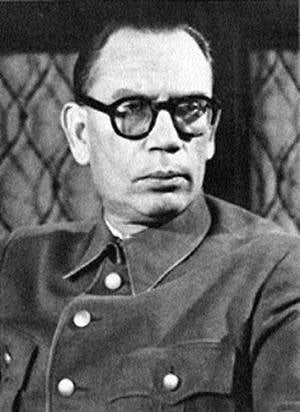 Vlasov.
Vlasov.In the described episodes, the figure of General Vlasov appeared, through the positions of the mechanized corps of which the Germans broke through to the outskirts of Lviv. Not much trouble.
And the last episode of Vlasov’s military biography in the Red Army was the command of the 2 shock army of the Volkhov front. It is known that the army fell into a difficult situation, died. And Vlasov surrendered. But it is almost not known that the army died due to non-compliance with Vlasov's order of the General Staff. The General Staff realized that the advance of the army was choking, now it was in a dangerous position. And they ordered Vlasov to withdraw the army to safe borders. The withdrawal of the troops was ordered to be carried out before 15 May 1942. Vlasov referred to the poor condition of the roads, the employment of these roads by a cavalry unit. And he announced the date when he will be able to begin the withdrawal of the army - May 23. The German offensive began on May 22. The army was trapped in full force.
If not to peer intently at the events of the first days of the war near Lviv, then this could be considered a fatal coincidence of circumstances, and Vlasov was a person who had a revolution in his outlook on 1942 due to the mistakes of Stalin in the first year of the war. But the events near Lviv were. Vlasov directly involved in them. Both roads, along which the Germans could get to Sknilov, literally passed along the edge of that forest, where the tank division of his corps stood in anticipation of the 31 order. The rest of the corps, too, were not far away. They directly covered the direction in which the breakthrough of the mechanized forces of the enemy was carried out, taking the east bank of the River Vereshitsa.
We can definitely conclude that Vlasov was also an important participant in the military conspiracy in the 1941 year. Moreover, the subsequent fate of Vlasov as the creator of the ROA itself becomes evidence of collusion with the Germans of those who led the headquarters of at least two fronts and individual armies of these fronts in 1941 year.
But this can be understood only by carefully studying the event series of the initial period of the war.
And you should definitely see the "toy soldiers" - the most important result of these games. The troops were taken away from the areas where giant stocks were concentrated in warehouses in both the new and old state borders. The conspirators deprived the Red Army of the means of warfare accumulated over several years of work of the defense industry.
Conversely, supplied the enemy with these means. Gasoline, projectiles for guns left by the Germans, air bombs, food, spare parts for equipment that were thrown due to minor breakdowns, medicines, explosives, wires, rails, sleepers, tires for cars, and fodder for horses. An interesting detail. In preparation for the war with the USSR, the Germans reduced their orders for the production of ammunition. They definitely knew that the Red Army in a short time will face a shortage of shells.
Vyazemsky boiler.
I am not ready today to talk about every problem 1941 of the year. Not everything is feasible. It is difficult to talk about what happened near Kiev.
But it was possible to clarify many important things about the Vyazemsky cauldron.
For me, the most surprising was the fact of the deployment of ten divisions of the Moscow national militia (BOT) - strictly against the direction of the main German strikes in Operation Typhoon. Five personnel armies of the Reserve front in the middle. And on the obvious directions of the possible offensive of the enemy - along the main highways - just now at the militia division.
Militias put on the most dangerous areas. Well, simply according to the logic: among the deaf Smolensk-Vyazma forests there are two highways. Minsk and Warsaw. Well, not through the forests and swamps to the advancing Germans. - Along the roads. And on both roads, the first to meet the blow was the operation of the Typhoon 10 divisions of the Moscow people's militia. Most of the national militia divisions arrived at the September 20 front. Literally 10 days before the start of the German offensive. And they received sections of the front, where the enemy is most likely to hit.
Secured over the head with everything that the servicemen could have missed, the 5 armies of the Reserve Front disappeared as a result of Operation Typhoon - as they never did.
And the Moscow militia-do not disappear. Rounded 8 BOTTOM - drawn on October 16 at the Borodino field. Later, the fighter of this BOT, Emmanuel Kozakevich becomes the author of the well-known story “STAR”, according to which the film of the same name was shot.
Three bottoms of the southern direction of the German breakthrough somehow overtake the Germans - and stop them in Naro-Fominsk, near Tarutino, near Belev.
In the northern section more difficult. The 2 BOTTOM at the cost of heavy losses breaks through the ring of the surroundings of the Reserve Front near the village of Bogoroditskoye. And he is surprised to find that the armies of the front do not wish to leave the encirclement through a passage that had been broken through by thousands of lives. The exsanguinated 2 BOTTOM in December 1941 was disbanded.
Another Moscow NWT after a long retreat, after leaving the encirclements, occupied the defense on the Pyatnitsky highway between the Panfilov and Beloborodov divisions. She became the 11 Guards Division. Panfilov's division became the 8-th Guards. The division of the Moscow national militia, thrown into battle without preparation, became the 11-th Guards.
And five - not divisions, but the armies of the Reserve Front, especially did not show themselves militarily, and at the same time provided the Germans with hundreds of thousands of prisoners. How can this be?
There are memoirs of the divisional commander of the 2 division of the national militia that on the first day of the German offensive he received an order from the command of the army, to which he submitted, to retreat. Following this, the liaison officers from General Lukin's 19 Army arrived to him - and ordered not to retreat, but to take such and such a line of defense - and to ensure passage through the positions of the division of this army. The paradox of the situation is that the divisional division executed this particular order. - Order someone else commander. Why?
And the division broke through the corridor from the Vyazemsky boiler, too, on the orders of Lukin. But the surrender of the army in captivity took place after the injury of Lukin.
About the very 19 army knows that literally before transferring it under the command of Lukin, the former commander Konev made a long list of officers of the army headquarters, whom he suspected of treason. And there is a memoir of a military doctor, who watched Lukin build officers of the army headquarters around 300 and summon volunteers to command three breakthrough companies. There were no volunteers. Company commanders were appointed by Lukin. With the task of a breakthrough, they nevertheless failed.
It seems that fragments of the terrible truth of the initial period of war have surfaced. The vastness of the officers' conspiracy was so significant that honest officers and generals had to take it into account constantly. And, it seems, to use the methods of identifying "their".
But that is another question. Important. And extremely relevant to today's Russia.
Output.
The main thing is that there was a conspiracy, the most important episodes of which and the writing of the realization of which we identified. The information that allowed him to calculate - surfaced. And they managed to capture the eye. Identify in the chaos of what happened contradictions and patterns.
The Soviet country was not put on the verge of collapse by the power of the German divisions, not by the lack of professionalism of our soldiers and officers of the year 1941, but by treason, carefully prepared, thought out, planned. Treason, which was taken into account by the Germans in the development of a completely adventurous, if objectively judged, plans of attack.
The Great Patriotic War was not a fight of Russians with Germans or even Russians with Europeans. The enemy was assisted by Russian officers and generals. It was not a clash of imperialism with socialism. The enemy was assisted by generals and officers, who were raised up by Soviet power. She was not a clash of professionalism and stupidity. The officers and generals who were considered the best, who, as a result of their service in peacetime, were elevated to the elite of the Red Army, helped. Conversely, where the officers and generals of the Red Army did not betray, the German military genius showed his own helplessness. The 5 Army YuZF - the clearest example of this. And then there were Tula, Voronezh, Stalingrad. Stalingrad from history is hard to wash off. There was a hero-city of Tula, a strike against which was taken by the workers of the Tula factories as part of the Workers regiment and Tula, the militarized protection of the plants, as part of the NKVD regiment. In 2010, the parade in Tula is not provided. They do not like Tula.
Nor do they like Voronezh. Although Voronezh in the defense phase - was the second Stalingrad.
After the discovery of the betrayal problem of 1941, the question of who fought against whom becomes much more relevant than it still seems. And this question is internal. Who fought with someone in our own country? He fought in such a way that the funnels from that war were not equal to this day. And spiritual wounds - not only veterans but also their grandchildren will get angry? - In contrast, no less brutal in terms of events at the front - the first world war, which for Russia is “forgotten.” The Great Patriotic War was worse, but more meaningful.
With this to be dealt with. So that there is no “end of story”, which has recently become too often mentioned.
It is necessary to understand that the person had a future.
Final note.
The proposed article takes into account the current state of minds. I did not begin to make it naukoobraznoy - with links and citations. And the current reader is disgusted, and at the same time everything can be found on the Internet. Everything is easy to find by keywords. Just in case (substitutions in the texts - and we are not insured for this) in the near future I will try to provide the article with citations and the texts of operational reports, combat orders, memoir quotations - in separate Appendices.
But while I am in a hurry - to lay out exactly the considerations that I have set out - and move on to equally important tasks. There are a lot of them now. Lots of.
And we also need to deal with them urgently - so that the “end of history” does not come.
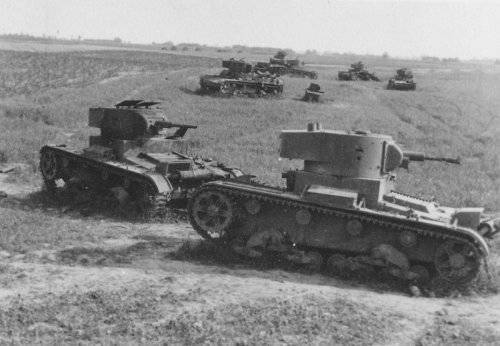
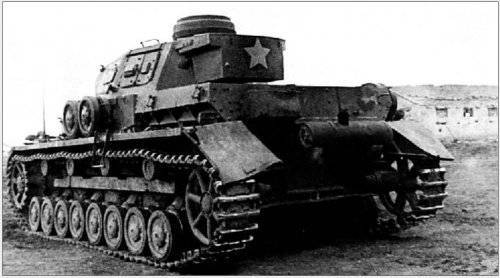
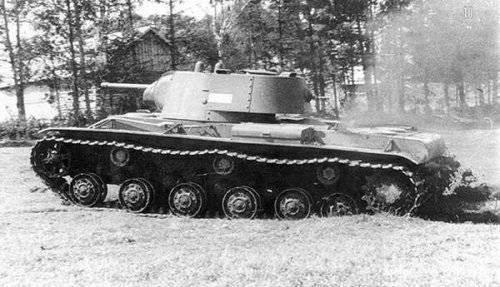
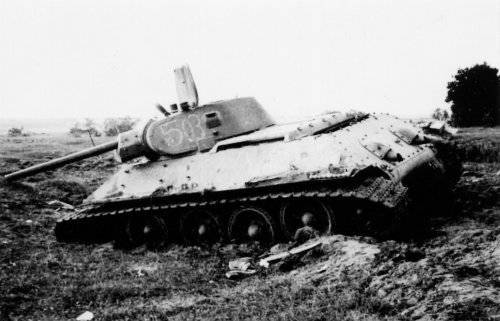
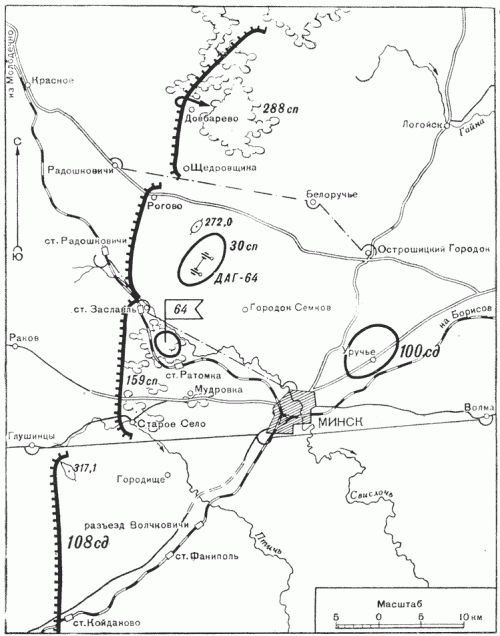
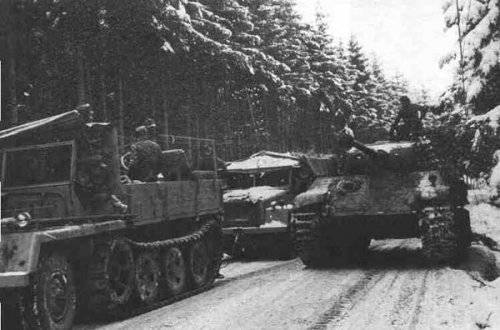


Information